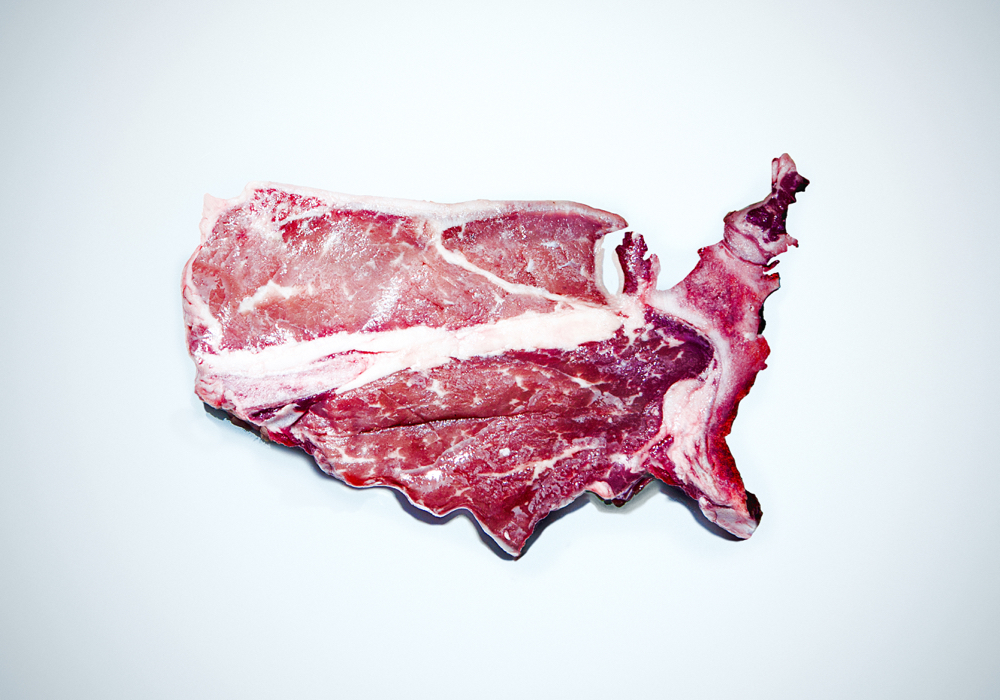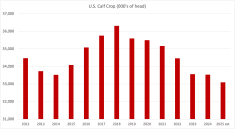Chinese beef imports have grown on the mainland, but in Hong Kong, beef supply is tight and prices are on the rise.
China imported 1.97 million tonnes of beef year-to-date October, up 12 per cent from 2020. Overall imported beef value is expected to exceed $11 billion USD for 2021. Although the overall beef price level in November dropped slightly, it is expected to remain elevated with Chinese New Year in late Jan 2022.
U.S. beef imports continue to grow, with a 615 per cent increase in volume (year-to-date October) compared to 2020. U.S. beef market share on volume increased from three per cent at the beginning of the year to 6.1 per cent as of October (2020 market share was one per cent). Canadian beef import volumes grew 136 per cent in volume and 103 per cent in value as of October, even though the number of suppliers is limited.
Read Also

Pen riders still better than tech at detecting respiratory disease in feedlot cattle, says researcher
Recent research found that pen riders are better than tech at flagging signs of BRD in feedlot cattle
China lifted its ban on Brazilian beef in mid-December. The ban came after Brazil discovered two cases of atypical BSE in the states of Minas Gerais and Matto Grosso.

Hong Kong beef import volumes dropped and year-to-date October total volumes were down 14 per cent from 2020 as beef prices rose due to the supply shortages. The beef supply in Hong Kong is still dominated by Brazilian beef and U.S. beef, while Indian beef became the third-largest import in terms of volume. Brazilian beef and U.S. beef volumes dropped 21 per cent and 31 per cent while Indian beef increased 47 per cent, as of October. Canadian beef was down 37 per cent in volume and 20 per cent in value compared to 2020.
Both the slow-down in foodservices sales growth and high beef prices increased concerns amongst beef importers and distributors in China. Uncertainty regarding beef price trends during the upcoming months have left importers hesitant to make purchase decisions. Cuts that have sufficient supply and that rely highly on foodservice sales currently face inventory backlogs. This has pushed prices down for cuts such as chuck eye roll. Meanwhile, prices for popular seasonal cuts in strong demand — such as short plate — remain high.
Beef prices also remain high in Hong Kong, and beef importers remain cautious about placing future orders. Short plate and short rib boneless are still the most popular cuts as the hot pot season continue. Importers are also looking for substitution of beef cuts due to increasing beef prices.
Pandemic still challenges retail sector
China’s total retail sales of consumer goods grew 4.9 per cent (year-to-date October 2021). However, compared with the same period in 2020, offline retail sales traffic trended down. Despite the National Day holiday, offline retail outlet’s sales values fell 19.2 per cent year-over-year, due to the severe situation of epidemic prevention and control and the spread of COVID in some areas.
Hong Kong’s offline retail sales are still facing challenges even as the pandemic’s effect has started to ease. Compared with the same period in 2020, offline retail sales are estimated to be down 30 to 50 per cent. Online retail sales maintained their growth, despite tough competition in the retail industry. HKTV mall, the largest local e-commerce platform, recorded a 17.5 per cent increase in sales in October compared to 2020. To compete with offline retail, as well as to drive more traffic online, HKTV mall opened their first offline outlet in Hong Kong offering local delivery service.

Price increases pressure foodservice industry
China’s food service sector revenue grew by 25.7 per cent (year-to-date October) compared to 2020. However, growth has slowed, only increasing two per cent in October compared to the same month last year. This slow-down is due to COVID outbreaks in some areas.

The price increase of raw materials has pressured operating costs in the catering sector. In early November, Haidilao, one of the top hot pot restaurant brands in China, announced the closure of over 300 stores in China due to operational issues.
Sales in Hong Kong’s food service sector grew thanks to control of the local epidemic situation. In the month of October, food service revenues are estimated to have recovered to 70 per cent of their pre-pandemic sales levels. With the resumption of quarantine-free travel with the Chinese mainland expected to kick off soon, the tourism sector is anticipated to drive more foodservice sales growth in Hong Kong.
















